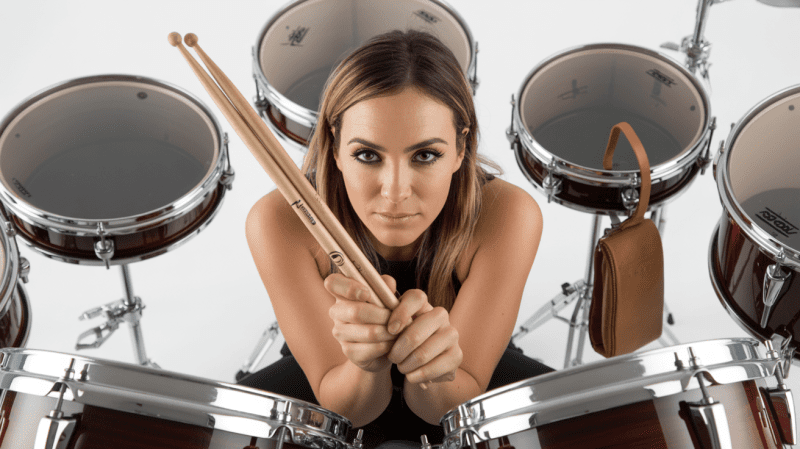"Beginner Beats: Drum Set Selection Wisdom for Novice Drummers"
When starting out as a beginner musician, selecting the right drum set is crucial for your learning and growth. With the variety of drum sets available in the market, it can be overwhelming to find the one that suits your needs and preferences. However, with some guidance and knowledge about the different components, you can make an informed decision that will set you on the path to becoming a skilled drummer.
The Drum Shell:
The drum shell is the main body of the drum set and is typically made of wood or acrylic. The material of the shell affects the sound quality, resonance, and durability of the drums. Wooden shells, such as maple or birch, are known for their warm tones and balanced sound. Acrylic shells, on the other hand, produce a brighter and livelier sound. Consider the genre you want to play and experiment with different materials to find the sound that best suits your style.

The Drum Heads:
The drum heads are the surfaces that you hit with your drumsticks. There are different types of drum heads available, such as single-ply, double-ply, coated, and clear heads. Single-ply heads produce a bright and punchy sound, while double-ply heads offer more durability and reduced overtones. Coated heads have a textured surface that provides a warmer tone, while clear heads produce a brighter sound with enhanced sustain. Experiment with different types of drum heads to find the ones that offer the desired sound for your playing style.
Demystifying Drum Set Components: What to Look for
To navigate the world of drum kits as a beginner musician, it's important to familiarize yourself with the various components that make up a drum set. Understanding what to look for when selecting a drum set can help you make informed decisions and find a kit that suits your needs and preferences.
One crucial component of a drum set is the bass drum. This large, cylindrical drum is typically placed on the floor and played with a pedal. The bass drum provides the low, booming sound that anchors the rhythm of a song. When selecting a drum set, pay attention to the size of the bass drum, as this will affect the overall sound it produces.
Another key component is the snare drum. Positioned between the drummer's knees, it is played with drumsticks or brushes. The snare drum produces a sharp, cracking sound and is essential for creating the distinctive backbeat heard in many styles of music. When choosing a drum set, consider the materials used to construct the snare drum, such as wood or metal, as this can impact the tone and versatility of the drum.
Cymbals are also an important consideration. These metal plates contribute to the overall sound and dynamics of a drum set. Common types of cymbals include the hi-hat, crash cymbal, and ride cymbal. The hi-hat consists of two cymbals that can be played together or separately, using a foot pedal. The crash cymbal produces a loud, explosive sound and is often used to accentuate certain beats or create climactic moments. The ride cymbal offers a sustained, shimmering sound and is predominantly used for keeping steady time.
Budget-Friendly Drum Sets: Finding Quality on a Shoestring
When starting as a beginner musician, finding the perfect drum set that fits your budget can be a real challenge. But fear not, as there are plenty of budget-friendly options available that offer decent quality without breaking the bank. Here are some tips to help you navigate the world of drum sets on a shoestring budget.
First and foremost, consider buying a used drum set. Many seasoned musicians often upgrade their equipment, which means there are plenty of great deals to be found in the used market. Look for local classified ads, and online marketplaces, or even check with local music stores to see if they have any used drum sets available. Buying used can save you a significant amount of money while still giving you a set that is reliable and in good condition.
Alternatively, you can opt for entry-level drum sets that are specifically designed for beginners. These sets usually come with all the essential components you need to get started, including drums, cymbals, stands, and pedals. While they may not have the same level of durability or sound quality as higher-end options, they are a great starting point for beginner drummers who are still learning the basics.
Last but not least, consider purchasing individual drum pieces instead of a complete set. This allows you to gradually build your drum set over time, adding new elements as your budget allows. Start with the essentials, such as a snare drum, bass drum, and hi-hat cymbals, and then expand your collection whenever you can. This approach allows you to invest in higher-quality pieces one at a time, ensuring that each addition is a meaningful upgrade to your setup.
Mastering the Art of Drum Set Maintenance: Tips for Newbies
As a beginner musician, selecting the right drum set is essential for honing your skills. However, it is equally important to learn how to maintain and care for your drum set, ensuring its longevity and optimal performance. Here are some tips to help you master the art of drum set maintenance as a newbie:
1. Regular Cleaning: Drum sets are exposed to sweat, dirt, and dust, which can affect the sound quality. Make sure to clean your drum set regularly with a dry or slightly damp cloth to remove any dirt or grime. Avoid using abrasive cleaners or solvents, as they can damage the finish.
2. Drumhead Maintenance: The drumheads are crucial for producing the right sound. To prolong their lifespan, it's important to keep them in good condition. Use a drumhead conditioner and a soft cloth to clean them. Additionally, avoid excessive tightening to prevent them from cracking. Tuning your drum set regularly will also help maintain optimal sound quality.
3. Hardware Check and Tightening: The hardware of your drum set, including stands, pedals, and brackets, should be checked regularly for any loose parts. Tighten all the screws and bolts to ensure stability. Lubricate any moving parts to prevent rust and keep them functioning smoothly.
Recent Featured Articles:
How to Choose the Right Drumsticks: A Detailed Guide
"Beat Break: Top Kits for New Drummers"
5 Essential Drum Rudiments for Beginners

